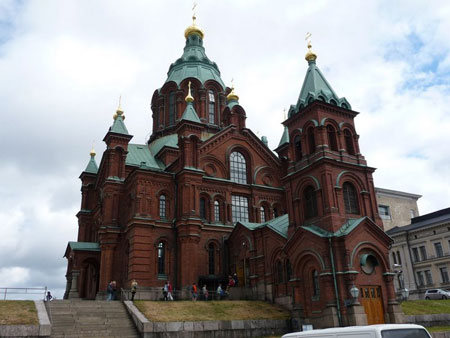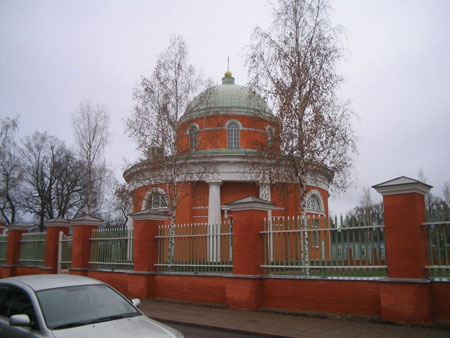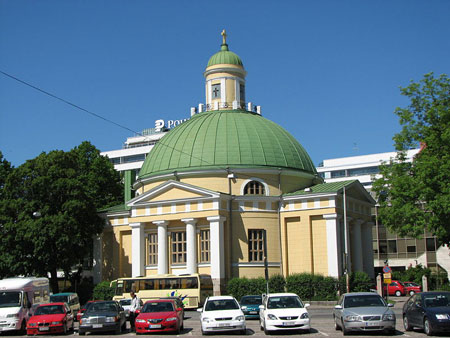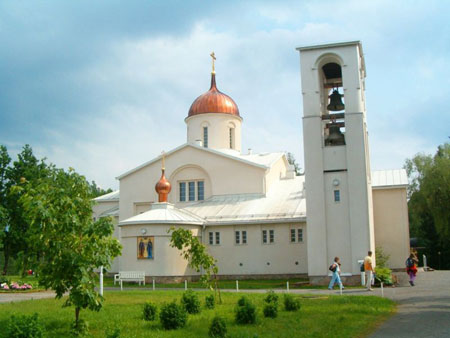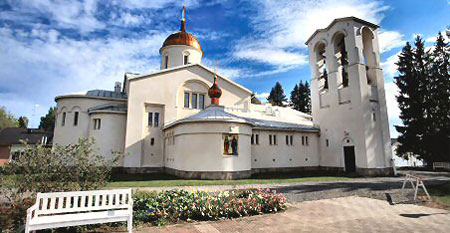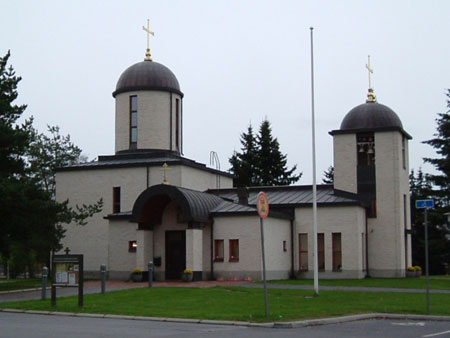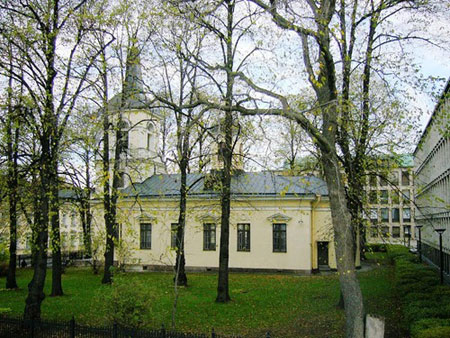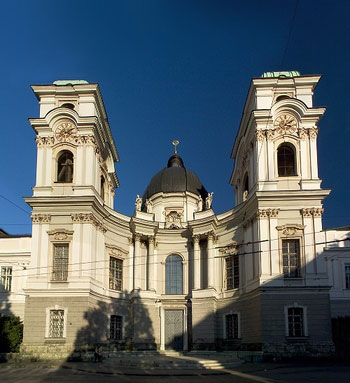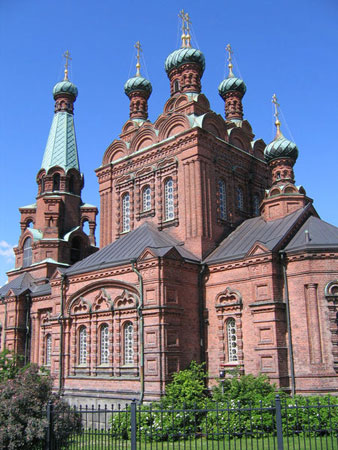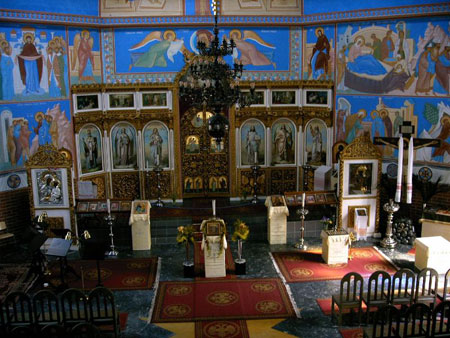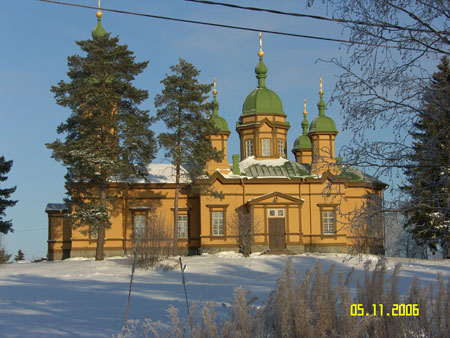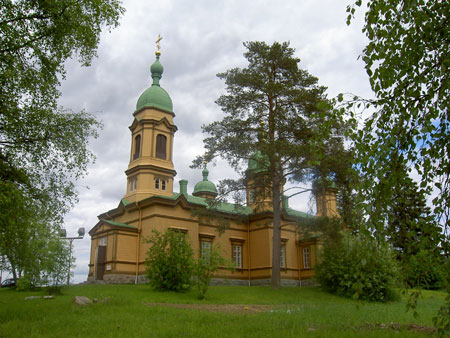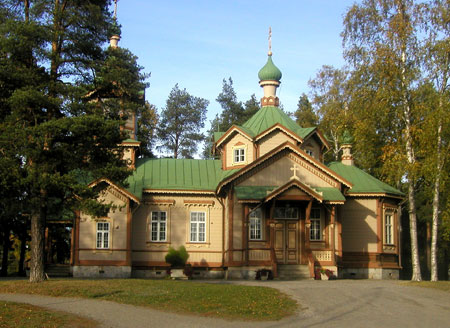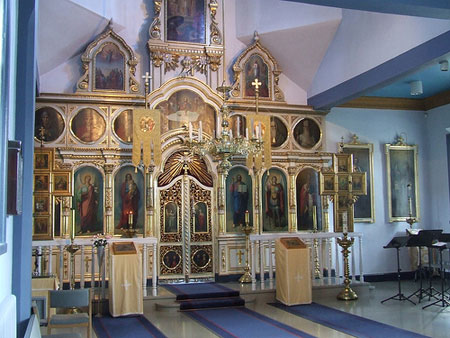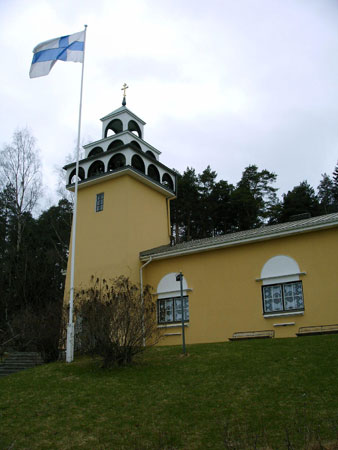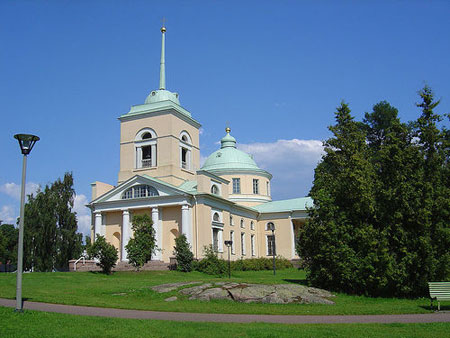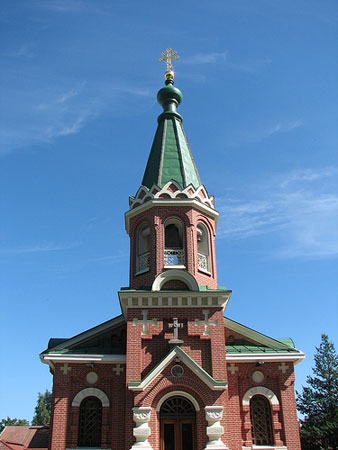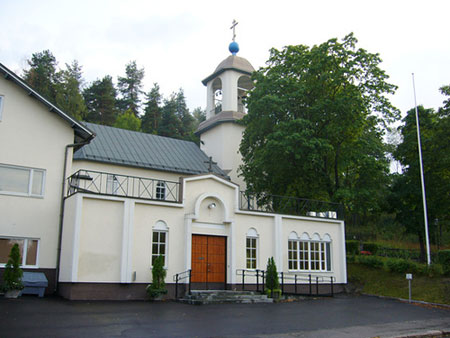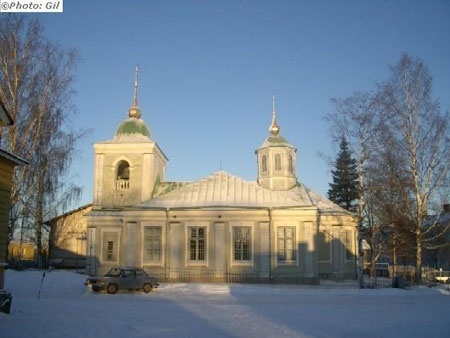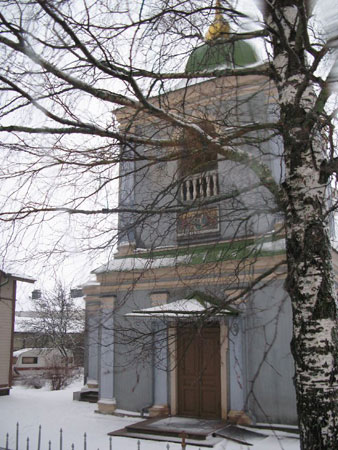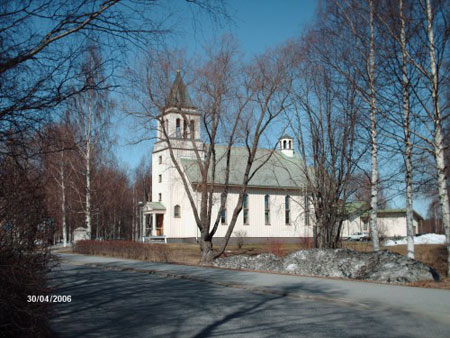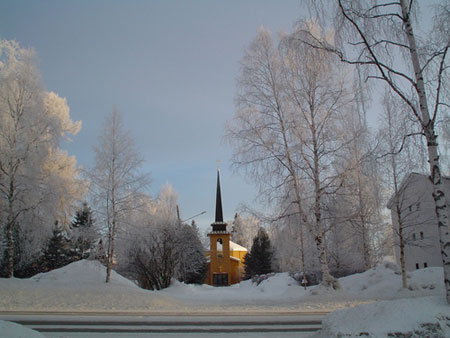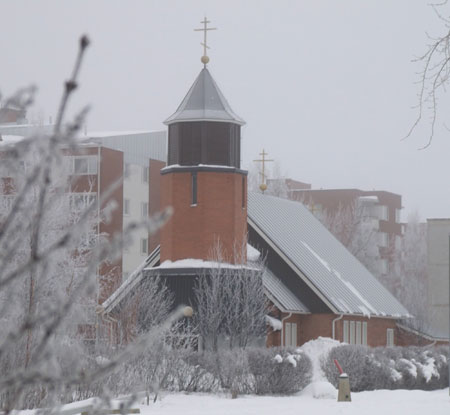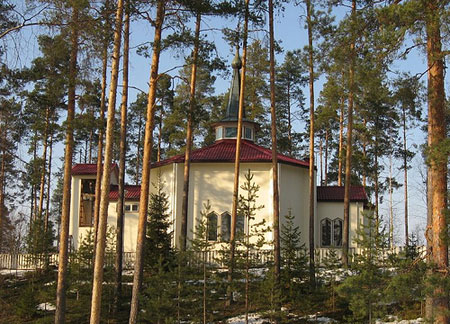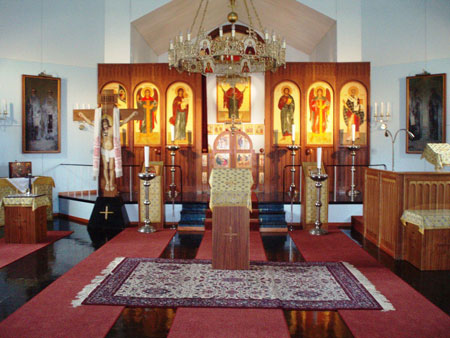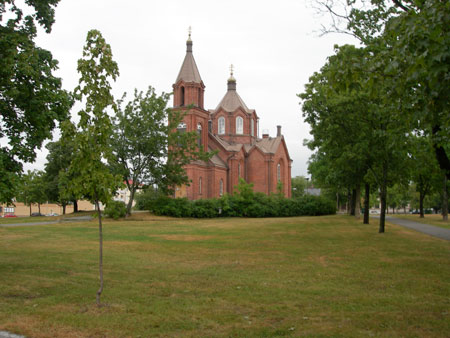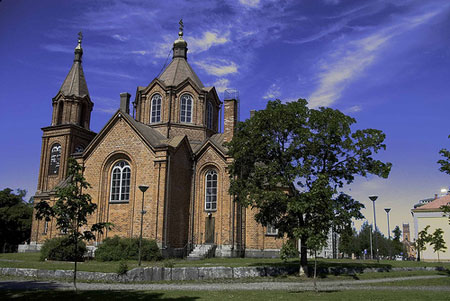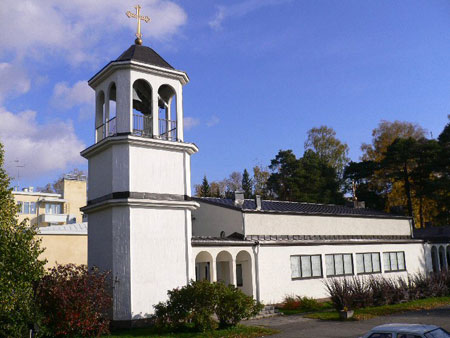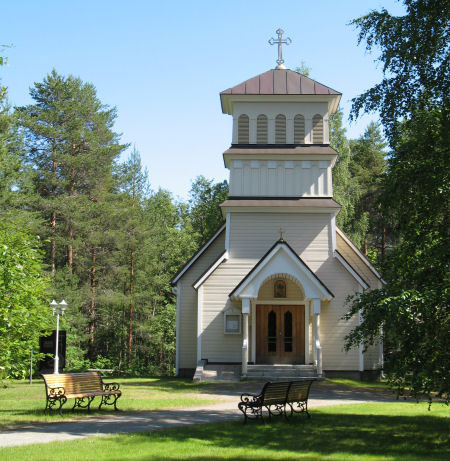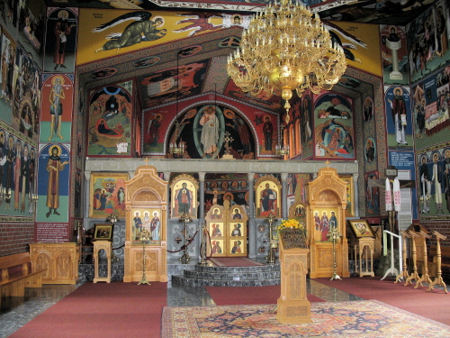Monasteries and churches in Finland
Uspenski Orthodox Church- Helsinki
Uspenski Cathedral (Finnish: Uspenskin katedraali, Swedish:
Uspenskij-katedralen, Russian: Успенский собор) is an Eastern Orthodox cathedral in Helsinki, Finland, dedicated to the Dormition of the Theotokos (the Virgin Mary). Its name comes from the Russian word uspenie, which denotes the Dormition. Designed by the Russian architect Alexey Gornostaev (1808-1862), the cathedral was built after his death in 1862-1868. The Cathedral is set upon a hillside on the Katajanokka peninsula overlooking the city. On the back of the cathedral, there is a plaque commemorating Russian Emperor Alexander II, who was the sovereign of the Grand Duchy of Finland during the cathedral's construction. Main cathedral of the Finnish Orthodox Church in the diocese of Helsinki, Uspenski Cathedral is claimed to be the largest orthodox church in Western Europe,[1] although Finland is normally included into Northern Europe. In 2006, about 516 500 tourists visited the church. Admission to the Cathedral is free of charge. In winter, the Cathedral is closed on Mondays.
Orthodox Church in Hamina
Orthodox Church of St Peter and St Paul, 1837.
Turku orthodox church
Sacrated 2.9.1845.
New Valamo Monastery
Tradition has it that the Monastery of Valamo was founded in the 12th century, or by the 14th century at the latest, by St. Sergei and St. Herman, who pursued ascetic lives on the island of Valamo (Valaam) in Lake Ladoga.. The monastery’s long history has included periods of rapid expansion and times of serious difficulties and tribulations. The first period during which it truly flourished was towards the end of the 16th century, but early in the 17th century it was destroyed so comprehensively that there was no further monastic activity at Valamo for more than a hundred years.The monastery’s renaissance began with a decree issued by the Tsar Peter the Great in 1716 that Valamo should be rebuilt, and the period from the end of that century until the early 20th century was the real Golden Age of the monastery in both a spiritual and a material sense. Hegumen Nazari, the leader of the monastery under whom the building work was commenced, and Hegumen Damaskin, who continued his work, developed it into a huge institution comprising a main monastery surrounded by twelve sketes, or subordinate monasteries. Although its economy was based most of all on agriculture, it also had numerous artisans’ workshops and the spiritual lives of the diligent monks also reached an exemplary level with the support of the traditional system of elders and father confessors. At its most populous, in 1913, the monastery had as many as 359 monks and 562 novices. The First and Second World Wars had dramatic effects on the life of the Monastery of Valamo. Having spent the period between the wars under the jurisdiction of the Finnish Orthodox Church, the whole monastery was evacuated in February 1940 and the 200 monks found a new home at Papinniemi in Heinävesi. The following decades were a difficult time for the monastery as its very existence was threatened by the ageing of the monks and the inevitable decline in their numbers, but the 1970s proved to be the opening of a new era. A new church was built and new novices began to appear. The monastery’s main source of livelihood also altered as tourism increased. Nowadays there are about ten monks engaged in a monastic life at New Valamo and it occupies an established position as a tourist destination and a centre for Orthodox culture in Finland.
Small Orthodox church in Pori
Holy Trinity church in Helsinki
The Church of Holy Trinity was built in 1825-1826, and dedicated in 1827. It was designed by Carl Engel in the neoclassical style. The Church of Holy Trinity is located next to the Helsinki Cathedral, and it is the oldest Orthodox church in Helsinki.
Orthodox church in Tampere
The Orthodox church of Tampere was built in Russian romantic style, with onion style cupolas, and was ready in 1896. The architect of the Russian army T.U.Jasikov drew the floor plan. The church was consecrated in 1899 to Saint Alexander Nevsky, a Novgorodian who in 1240 fought against the Catholic Swedes and two years later the Catholic Teutonic Knights with equal success, and was accordingly canoniced for these nationalistic but bloody deeds. Emperor Nicholas II donated the bells to this church. The church suffered heavily during the Finnish civil war in 1918; its reconstruction took many years. After Finland declared its independence, it was re-consecrated to St. Nicholas, a less belligerent saint.
Orthodox church in Iisalmi
Orthodox church in Ilomantsi
Wooden Orthodox church - the largest in Finland. The church is dedicated to the prophet Elias.
Orthodox church in Joensuu
Church of St. Nicholas. The main church of Joensuu Orthodox community, and the only in Joensuu region.
Orthodox church in Jyväskylä
The Orthodox Church of Resurrection is situated at Rajakatu 39, next to the Jyväskylä Polytechnic. There are three services every week in Finnish: Vespers
every Wednesday at 5.30 pm, Vigil every Saturday at 6.00 pm and Divine Liturgy every Sunday at 10.00 am. The Divine Liturgy in church Slavonic is celebrated
five times a year and twice a year in English.
Orthodox church in Kotka
St. Nikolaos Orthodox Church was built in the neoclassical Palladian style in 1799-1801. The church has many icons, and a precious collection of
ecclesiastical textiles. St. Nikolaos Orthodox Church is the oldest building in the city.
Orthodox church in Kuopio
Orthodox church in Lahti
Designed by Toivo Paatela (1954)
Orthodox church in Lappeenranta
It is the oldest Orthodox Church in Finland. It was established in 1785. It was the 2nd building to be build in Lappeenranta inside the fortress area.
Orthodox church in Lieksa
Orthodox church in Nurmes
Orthodox church in Oulu
The Holy Trinity Cathedral - a Greek Orthodox Church in Oulu, Finland. Oulu is one of the three dioceses in Finland headed by Metropolitan Panteleimon.
Orthodox church in Rautalampi
Vaasa Orthodox Church
Orthodox church in Varkaus
Orthodox church in Kajaani

